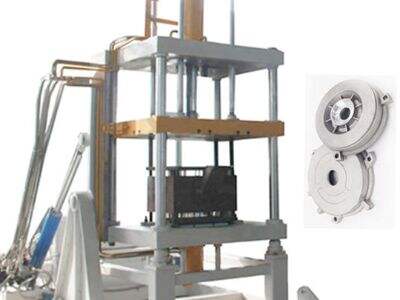Gravity casting is rare and critical manufacturing process. It reduces the amount of material used and the waste produced. This is very important, as it prevents the unnecessary use of resources, and ensures that products are produced to a very high standard. So, here is what gravity casting does with saving materials, and why it is an amazing technique.
What is Gravity Casting?
One type of casting allows us to manufacture a variety of different designs and shapes and using not too much material. During this, hot liquid metal, plastic or other things poured into mold. The force of gravity then brings the liquid into the mold to fill it up completely. The material cools, taking the desired solid shape we wanted after pouring. This process is very useful as it can produce intricate and detailed designs that could be difficult to produce through other processes.
Simple and Cost-Effective
Another great thing about gravity casting is that it doesn’t require expensive machines or complex gear. Rather, it is a straightforward operation that can be performed with the sort of tools that many of its factories already possess. This means a process where you create high-quality items with little material waste making it a cost-effective and resource-effective process. Gravity helps manufacturers save money on the entire better product.
Reduction in Waste through Gravity Casting
The gravity casting process minimizes waste during manufacturing. It allows us to have a very precise control of the amount of used material. Other processes may generate scrap material that must be disposed of or recycled, but gravity casting mitigates this issue. When we use only the materials we need to manufacture a product, we prevent extra waste from being formed. This is not only beneficial to the environment but also makes the entire manufacturing process (much) smarter and more efficient.
Good for Material Use
Environmental Aspects of Gravity Casting When it comes to consumables, gravity casting has numerous significant advantages. First, less raw material is used compared to other manufacturing methods, resulting in less waste being generated in the production process. Second, it enables precise information about how much material is actually used to create a product, so that we can only use what is necessary. In the end, gravity casting can make items lighter as well as stronger, which reduces the amount of material needed to manufacture them even more. This effectiveness is a huge leap for better Nugget, which must be kind to our Earth.
Benefits of Gravity Casting
Benefits of Gravity Casting There are numerous! This aids in making quality products by generating less waste. It is also economical to carry out which makes it an option for a lot of manufacturers. Moreover, gravity casting is versatile and can be utilized with various materials and for several applications. Its flexibility is what makes it such a popular choice for multiple industries.
Gravity casting also has the significant advantage of allowing manufacturers to create products that are lightweight but strong. This property is particularly vital in industrial sectors where the weight of products is of utmost importance, such as in aerospace and automotive industries and sports equipment manufacture. This enables improved performance and efficiency in these industries by making lighter products.
Boqiao's Role
Gravity casting is Boqiao's main skill with which it produces virtually no waste while making premium products. Their approach prioritises sustainable materials and more efficient manufacturing methods to reduce waste within the sector. Boqiao is playing a part in a more sustainable manufacturing process so we focus on making it better whilst using good materials. The also help protect the environment by minimizing waste and saving resources in the process. It demonstrates just how much gravity casting can contribute to a positive future for manufacturing.



 AR
AR
 BG
BG
 HR
HR
 CS
CS
 FR
FR
 DE
DE
 EL
EL
 HI
HI
 JA
JA
 KO
KO
 PL
PL
 PT
PT
 RO
RO
 RU
RU
 ES
ES
 CA
CA
 TL
TL
 IW
IW
 ID
ID
 LV
LV
 SR
SR
 SK
SK
 SL
SL
 UK
UK
 VI
VI
 SQ
SQ
 ET
ET
 GL
GL
 HU
HU
 TH
TH
 TR
TR
 FA
FA
 AF
AF
 MS
MS
 SW
SW
 BN
BN
 LO
LO
 MN
MN
 MY
MY



